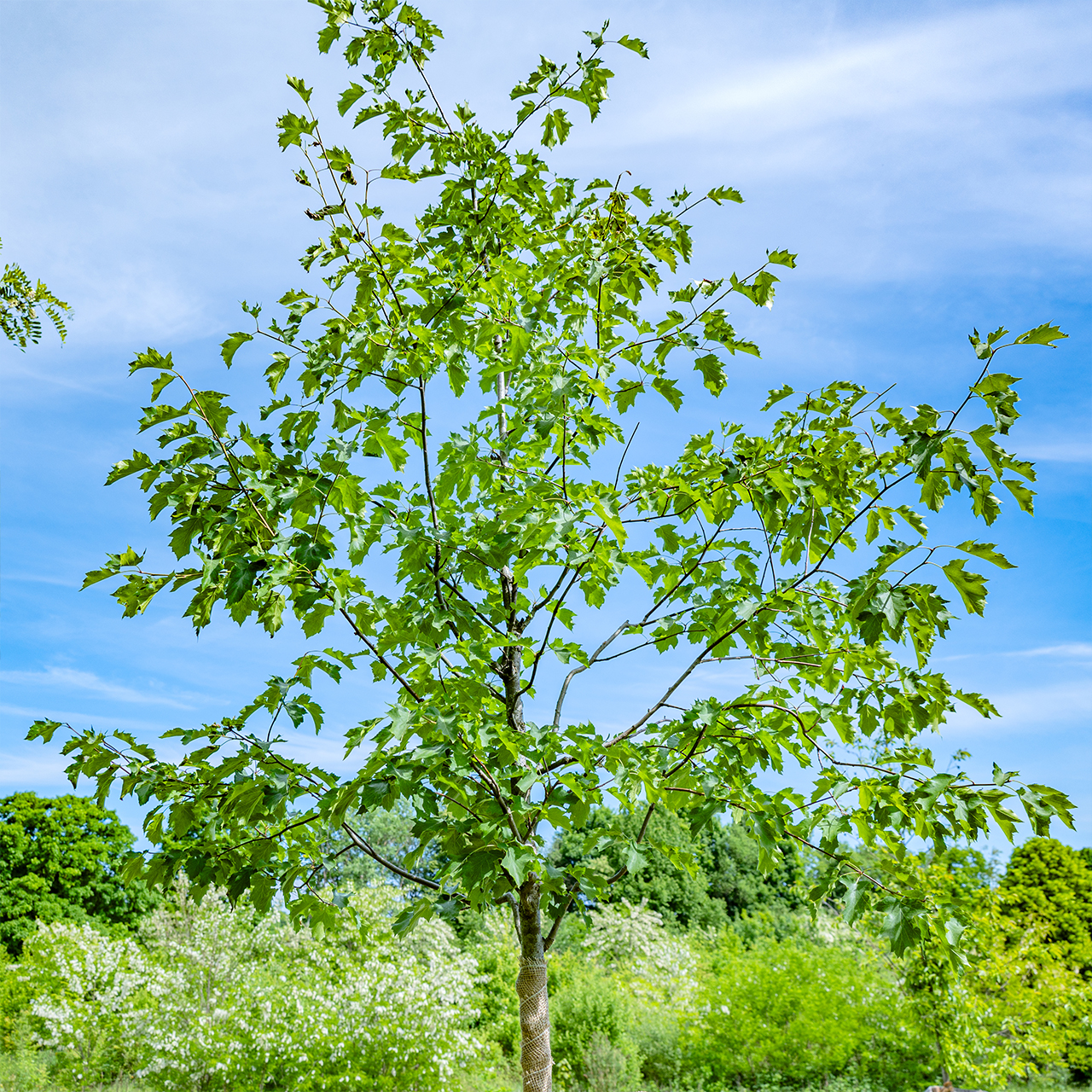Wild service tree
The wild service tree does not have great demands when it comes to its environment – and yet it is one of the rarest trees in Germany. Its wood is among the hardest timbers in Europe and is highly valued by carpenters and in musical instrument making. At over 20 metres, it is the largest member of the rose family in the world. In some places, it is known as the “Ruhr tree.” This is not because its resilience and strength make it so suited to the Ruhr region. The word “intestinal pain” (torminalis) is part of its botanical name – and the German word “Ruhr” also means “dysentery.” In the Middle Ages, its berries were used as a remedy for dysentery and other gastrointestinal diseases.
Wild service tree (Sorbus torminalis)
| Family: | Rose, Rosaceae |
| Distribution: | Central Europe, Asia Minor and North Africa |
| Size: | 10–20 metres in height and 7–12 metres in breadth |
| Life: | Up to 200 years |
| Requirements: | Sun to partial shade; it is drought- and heat-resistant |
| Soil: | Moderately fresh, nutrient-rich soils; likes calcium |
| Benefits: | Bee pasture, source of food for butterflies and birds |
An ode to the region
The history of the Ruhr region begins with industrialisation. The rapidly growing coal and steel industry needed lots of new workers. And they came in their hundreds of thousands – initially from Silesia, Pomerania, East Prussia and Masuria. But pretty soon the demand could no longer be met. The German government therefore concluded recruitment agreements with countries such as Türkiye, Italy, Spain, Yugoslavia, Morocco and even Japan. The population structure changed dramatically as a result. And the towns literally ballooned in size. While they had a population of between 2,000 and 5,000 at the beginning of the 19th century, large cities emerged in the period that followed.
If you travel through the Ruhr region today, you experience one of Europe’s largest metropolitan areas, numbering over 5.1 million people in 53 towns and cities. The coal mining district has been transformed from what was termed the “Coal Pot” into a leisure and cultural region that attracts almost 9 million tourists every year. More than 200 museums, 100 cultural centres, 120 theatres, 100 concert halls, 3,500 industrial monuments and 250 festivals await them, while almost 30 technology, innovation and start-up centres shape its commercial life. Six of the 100 German companies with the highest revenue are located here, while 22 universities form the densest educational landscape in Europe.
Occasion for planting
The wild service tree is popularly known in Germany as the “Ruhr tree” – it does, however, not owe its nickname to the Ruhr region. But we think it is high time a tree is named after our part of the world. We therefore dedicate this wild service tree to a special occasion: In October 2024, the RAG-Stiftung opened a treasure trove at the Colosseum in Essen: The coffee-table book RUHRGOLD, which the RAG-Stiftung co-financed, presents over 300 jewels of the Ruhr region on around 700 pages. From art and culture, architecture and nature, to business and science – it is an ode to the transformations of the former hard coal mining districts in opulent images and with inspiring guest contributions.
